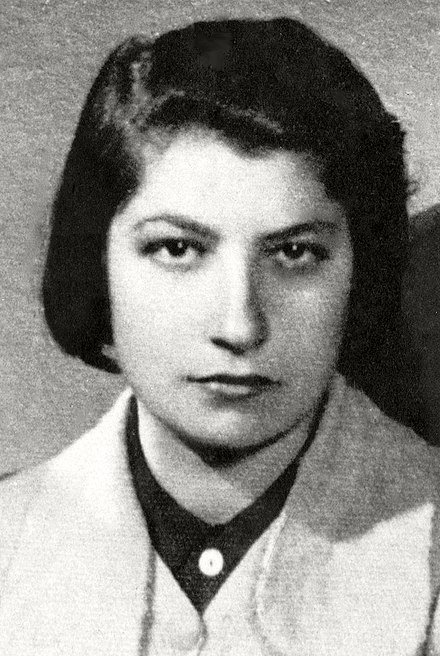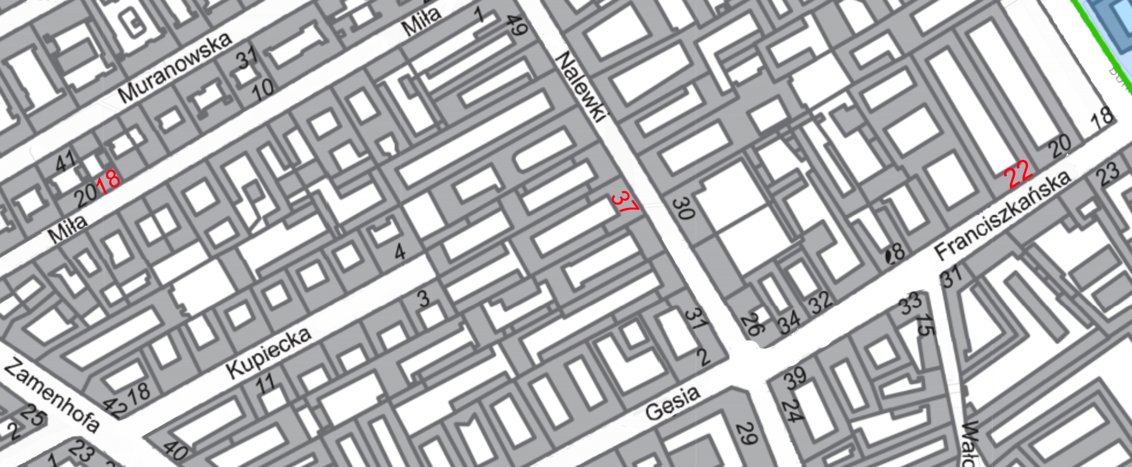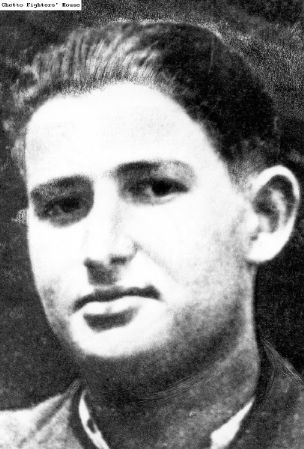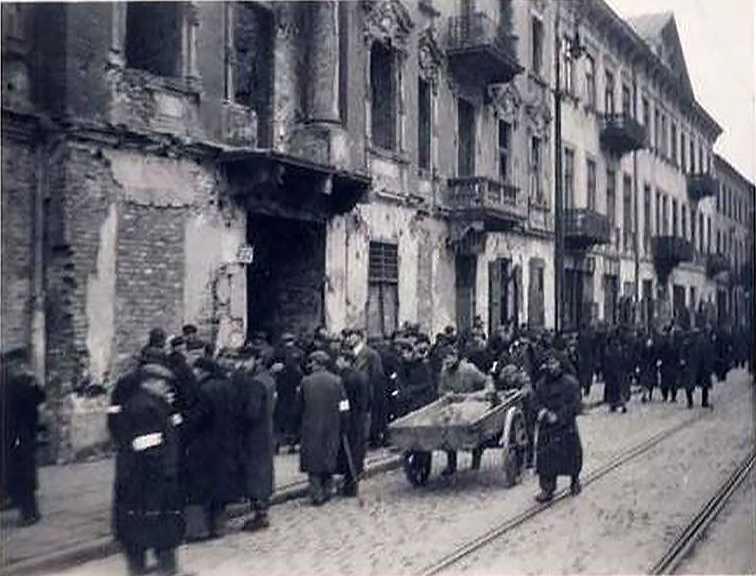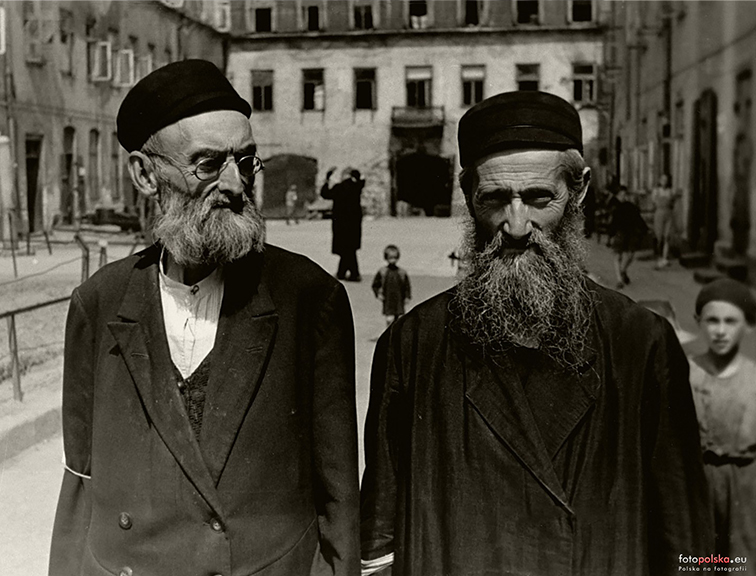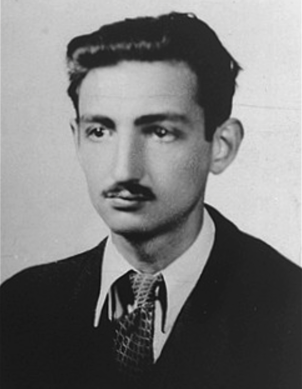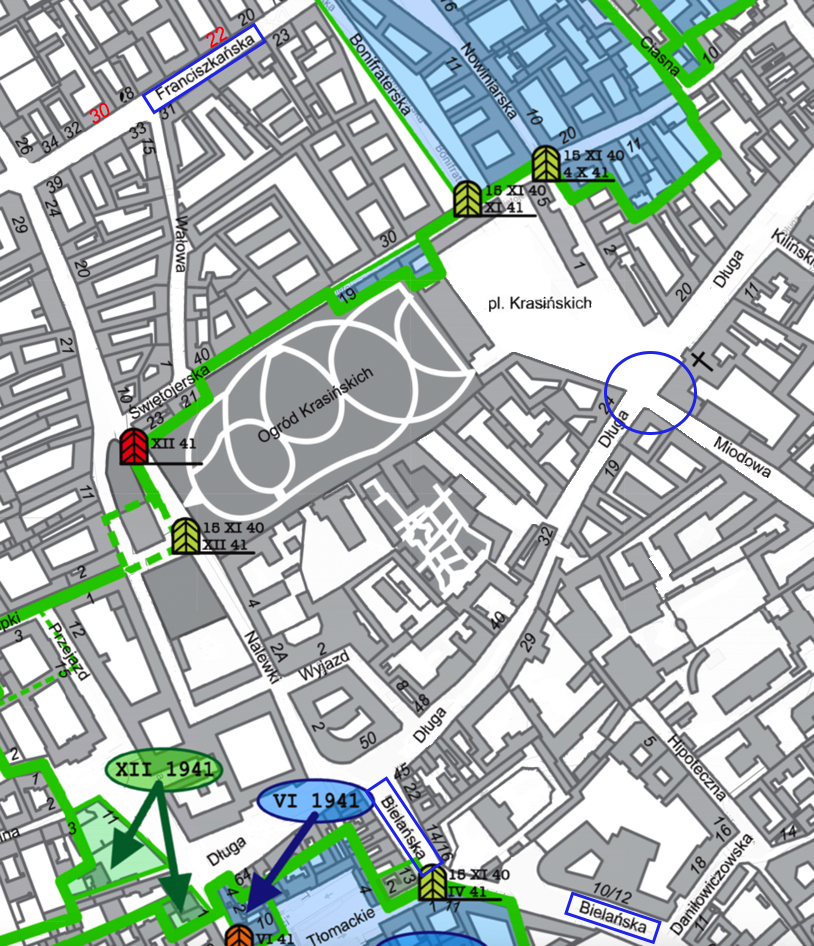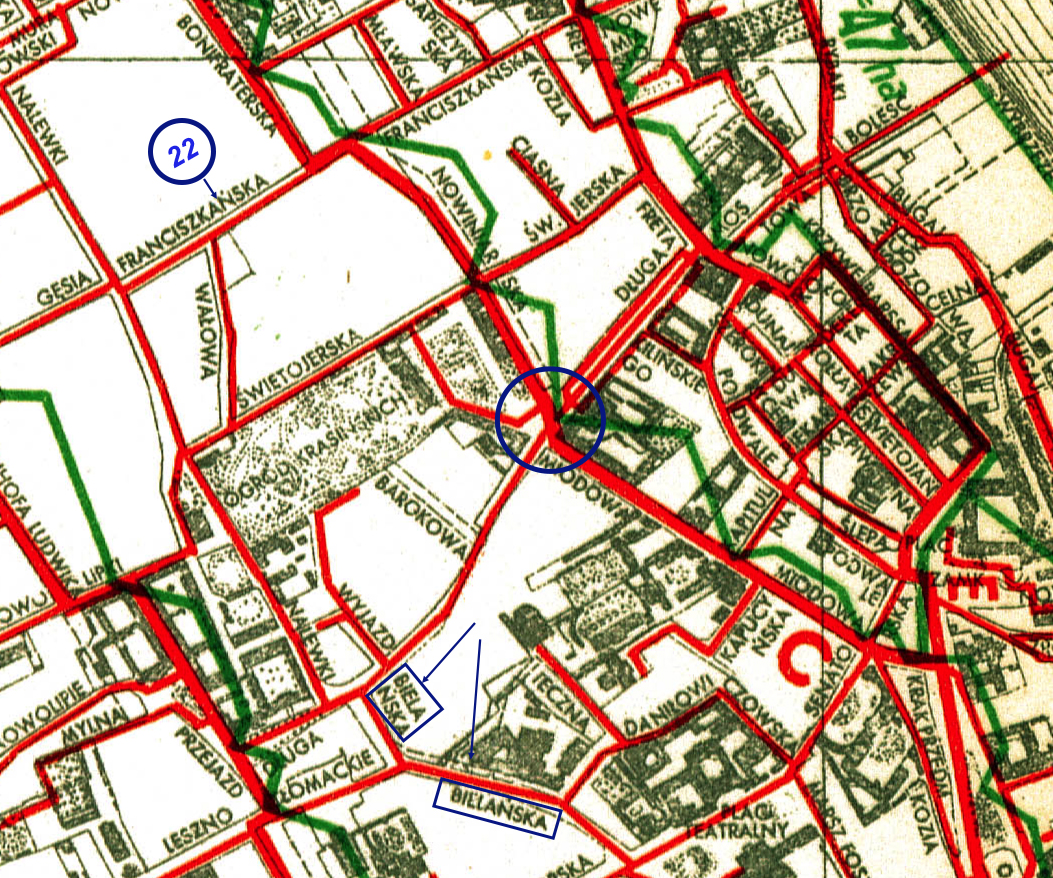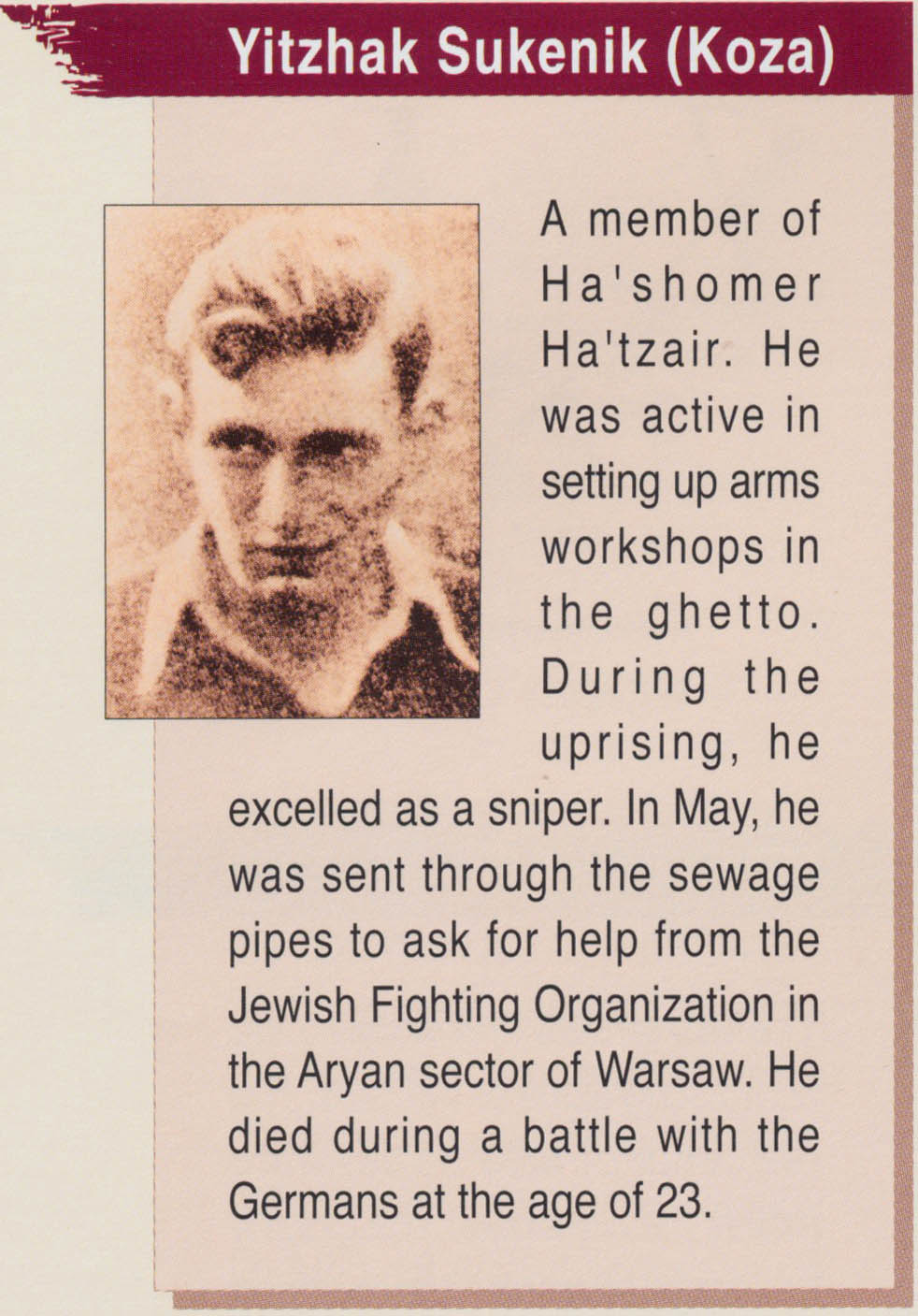Yitzhak Sukenik - Koza - Part 2 - The Warsaw Ghetto Uprising
The Warsaw Ghetto Uprising
April 19 to May 8
1943
Day 1 of the Uprising - April 19 1943
Day 3 of the Uprising - April 21 1943
Mila 29 which had been the headquarters of the ZOB was burning. Mordechai Anielewicz was preparing for a quick departure but wanted to wait until it was dark because of the danger of moving in daylight while SS patrols were out hunting.
But when the smoke grew thicker he ordered 20 fighters to get ready to leave with him and find another hideout. He led his fighters out of the bunker and formed them into a column in the courtyard. Then after an exchange of shots with a German patrol passing nearby, they sprinted through the courtyard gate and down Mila street towards Nalewki, hoping to join other groups based there if they could get through.
En route they stopped at Mila 17 where Mordechai decided they would stay the night. Many people from different groups joined them. They rested and shared their food. 4
Day 4 of the Uprising- April 22 1943
At Mila 17,their temporary refuge, Mordechai Anielwicz, Chaim Frymer and other fighters awoke early early to the crackle and roar of catastrophe. Wild fires raged all around, buildings tumbled thunderously, and billows of smoke spiraled into the heavens. The whole area was afire. 4
The following is an extract from "Out of the flames" by Chaim Primer describing the events of the 22nd April
"The Germans had captured the parallel street, Kupiecka, and had started burning down the buildings. We sent two of our men to patrol the area. On their return, they reported that the Germans were concentrated in Kupiecka Street. We were between the streets – Mila to the north, Kupiecka to the south, with a large yard opened up from the house to each of these streets. So we positioned ourselves in the yard, intending to hit the Germans who would enter our trap.
This time Koza was with me, my first shooting instructor, and a terrific shot. Koza's post was just in front of the gate. And indeed, when the Germans came, Koza lived up to our expectations and shot two of them dead with one bullet, something which raised his reputation amongst the fighters. A few more Germans were killed in the yard. '"
Ulica Kupiecka Street viewed from Zamenhofa, with Zamenhofa 42 / Kupiecka 18 on the left.
.
Picture from the Stroop Report May 1943
Source: "The Ghetto Men" 1
Stroop Report
Teletype message
From the SS and Police Fuehrer in the District of Warsaw
Warsaw, 22 April 1943.
Ref. No. I ab St/Gr 16 07-Journal Nr. 530/43 secret.
Re: Ghetto Operation. (supplement to par. 1 of letter of 21 April 1943).To: The Higher SS and Police Fuehrer of Police Krueger-or deputy: Cracow
Our setting the block on fire achieved the result in the course of the night that those Jews whom we had not been able to find despite all our search operations left their hideouts under the roofs, in the cellars, and elsewhere, and appeared at the outside of the buildings, trying to escape the flames. Masses of them- entire families-were already aflame and jumped from the windows or endeavored to let themselves down by means of sheets tied together or the like. Steps had been taken so that these Jews as well as the remaining ones were liquidated at once. During the whole night there were shots from buildings which were supposed to be evacuated. We had no losses in our cordoning forces. 5,300 Jews were caught for the evacuation and removed.
Progress of the Ghetto Operation on 22 April 1943 up to 1200 hours.
One raiding party was dispatched to invade once more the block of buildings which for the greater part had burned out or was still aflame, in order to catch those Jews who were still inside.
When shooting again started from one block against the men of the Waffen-SS, this block also was set on fire, with the result that a considerable number of bandits were scared from their hideouts and shot while trying to escape.
Apart for those, we caught about 180 Jews in the yards of the buildings. The main body of our units continued the cleansing action from the line where we terminated this action yesterday. This operation is still in progress. As on the preceding days local resistance was broken and the dug-outs we discovered were blown up.
Unfortunately there is no way of preventing part of the Jews and bandits from taking refuge in the sewers below the Ghetto, where we can hardly catch them since they have stopped the flooding. The city administration is not in a position to frustrate this nuisance. Neither did the use of smoke candles or the introduction of creosote into the water have the desired result. Cooperation with the Wehrmacht splendid.
The SS and Police Fuehrer in the District of Warsaw.
Signed: Stroop
Certified copy:
SS-Sturmbannfuehrer.
Day 5 of the Uprising - April 23 1943
When night fell on the 22 of April , Mordechai Anielewicz led his small force towards Nalewki hoping to join up with other groups but were pinned down in Mila 5 and could not move. Trapped in the courtyard they decided to breakout expecting the worst but finding the Germans had gone. Mordechai led his group to Mila 16, one of the few buildings not on fire, where they stayed and slept.
After dark they moved on to the next building, Mila 18, where they had learned that under the rubble was the most elaborate bunker in the Ghetto. After finding the entrance, they climbed down a ladder and were met and warmly welcomed by Shmuel Asher.
Although the courtyard of Mila 18 had been a jumble of ruins since the Germans attacked Warsaw in 1939 underneath the ruins lay the largest & most elaborate bunker in the ghetto with 4 entrances, built and ruled by Shmuel Asher, alias Shmuel Izhakel, a roly-poly foul mouthed character.
He built it for his family, friends and gang of thieves known in Warsaw as the Chompes. Asher's gang of thieves had excavated under three large adjoining buildings. Electricity , a well providing water, a fully equipped kitchen, recreation room made homely with brightly coloured sofas and other decorative items. Goods smuggled from the so-called Aryan side of Warsaw to the ghetto were stored here.
This became the new headquarters of the ZOB. 4
Day 12 of the Uprising - April 30 1943
Stroop Report Extract 30 April
Combing out by search parties was continued. Although some giant blocks of buildings now are completely burned out, the Jews continue to stay in the dug-outs 2 to 3 meters below ground. In many cases we are not able to discover those dug-outs unless some Jew, whom we have already caught, gives us a hint as to their whereabouts.
Repeatedly, during the last few days, Jews have testified that some armed Jews emerge at night from some hideouts or dug-outs and threaten the other Jews with shooting if they give any signs of life. We were able to ascertain beyond all doubt that several dug-outs had been closed from the outside by these bandits, who tried in this manner to prove that they meant business.
Altogether, 30 dug-outs were discovered, evacuated, and blown up today. Again we caught a great number of bandits and subhumans. Apart from the bombing-out operations effected by small parties, two larger battle groups were occupied with bombing out and destroying by fire several interconnected blocks of buildings.
The number of Jews in possession of arms was much higher than before among the Jews caught during the last few days. Today, we again captured arms and particularly parts of German uniforms from them.
Day 13 of the Uprising - May 1 1943
The 13th day of the Ghetto Uprising centered on fighting at the large bunker at 30 Franciskanska Street and also on Nalewki, Leszno and Nowolipie Street. There are two accounts of Koza in action on this day Extract from "Between-tumbling-walls" by Tuvia Borzykowski There were no casualties. We were happy to have celebrated May 1 in a manner befitting Jewish fighters. "
"Towards the end of April the revolt reached its climax and so did the destruction inflicted by the enemy.
The fires had destroyed all houses of the ghetto, and the earth was torn up by bombs. May 1, international worker's holiday was approaching ... and we thought of ways to mark the holiday in a matter befitting the circumstances, and we finally decided to do it by a vigorous attack on the enemy.
We usually attacked only by night, but this time we went into battle in broad daylight. We came out and stood amidst ruins, waiting for the enemy to approach .We saw Germans from a distance, and they saw us too, but misled by the steel helmets and the guns they thought we were German soldiers.
It was that mistake of theirs which enabled us to carry out our plan.
When the right moment came we attacked. Itzhak Sukenik (Koza), a member of Hashomer Hatzair sent a burst of fire at the Germans, felling three of them.
The rest were so taken by surprise that for a while they did not know what to do, then they started to chase us. We moved in the direction of our bunker, leaping from ruin to ruin. It was a long and difficult road which took nearly all day .....We returned to the bunker in the evening.
Extract From "Out of the flames" by Chaim Primer
"On the First of May, I left on a mission. We were to hide in a building, ambush the Germans, kill them and flee.
We left at midnight. The commander of the group was Merdek (Mordechai Growas) . Koza, the best shooter in the Organization, came with us and so did four more fighters, one of them a girl from HaShomer HaTzair. So we were seven people, each carrying a pistol. Koza was the only one with a rifle.
Mordechai rounded us up and briefly explained the mission. He basically said: "Jump them wherever you can get them".
We wandered through the yards and attics for two hours.We reached 43 Nalewki Street, which seemed suitable for an ambush. We found some pieces of bread and a few potatoes. We broke a couple of chairs and lit up the fireplace. We placed the potatoes in the fire and once they were ready, we hungrily ate them. The house had running water so we cleaned ourselves up a little. Then we found a convenient spot to place an ambush. We positioned ourselves on the top floor of the building, lookingover the yard, just across the entrance gate.
It was easy to guess that the Germans would come to burn down the building. At 8 o'clock, we heard the voices of German soldiers coming up Nalewki Street.After a while, a man dressed as a civilian walked through the gate, followed by two Germans. The civilian walked over to the stairway, looked inside, and turned to the Germans to tell them something. They ordered him to stand against the wall and shot him. The man fell to the ground. Obviously, the man was one of their informers and was used by the Germans to the point they considered him redundant, so they killed him.
As the Germans turned to leave the yard, Koza said: "Just look, now they're mine!" He took the rifle, and once they reached the gate, Koza pulled the trigger. One soldier fell, as the other staggered away. We left our position immediately and looked for another hiding spot.
We looked for another opportunity to encounter the Germans and kill them. We placed our ambush at several spots, but to no avail.As darkness descended, we returned to the bunker. We gave our report and got our orders: to leave and make contact with other groups wandering around the Brushmaker's Shops, at 30 Franciszkanska Street. "
Images of Nalewki Street
Nalewki street, like many other streets in Warsaw, contained buildings with bustling communities of homes and shops surrounding a central courtyard. It is within these courtyards that many of the battles took place offering ideal hiding places and defensive locations to trap and fire on German soldiers.
Nalewki street
View from Mila street No. 42 on the left , 43 a bit further down on the rightNalewki 47
1939-41
A Courtyard in Nalewki Nalewki 20
1935 - 39Stroop Report Extract May 1, 1943
Progress of large scale operation on 1 May 1943. Start 0900 hours. 10 searching parties were detailed, moreover a larger battle group was detailed to comb out a certain block of buildings, with the added instruction to burn that block down.
Within this block of buildings there existed a so-called armament factory which had not yet been entirely evacuated, although it had had enough time to do so. It was not exempted from the operation.
Today's operation a total of 1,026 Jews were caught, of whom 245 were killed, either in battle or while resisting.
All the Jews caught today were forcibly pulled out of dug-outs. Not a single one gave himself up voluntarily, after his dug-out had been opened. A considerable part of the Jews caught were pulled out of the sewers.
We continued systematically blowing up or blocking up the sewer entrances.
In order to ascertain the movements of the Jews during the night, today I used for the first time 5 scouting parties at irregular intervals during the night. In general, it has to be stated that our men need extraordinary diligence and energy to discover the Jews who are still in so-called dug-outs, caves, and in the sewerage system.
It can be expected that the remainder of the Jews who formerly inhabited the Ghetto will now be caught. The sum total of Jews caught so far has risen to 38,385. Not included in this figure are those who died in the flames or in the dug-outs. One patrol discovered an unascertainable number of corpses floating in a main sewer under the Ghetto.
Outside of the Ghetto, in the immediate vicinity of Warsaw, the gendarmerie has shot a total of 150 Jews who could be proved to have escaped from Warsaw.
Again we captured pistols and explosives.
Map of German actions from "The Ghetto Men" 1
Day 19 - May 7 1943
Mila 18 became a magnet for the ZOB fighters as the Germans were systematically burning down the Ghetto building by building. Ammunition was running short, small arms were limited & ammunition low. Conditions in the bunker were getting worse, the airless overheated rooms sapping everyone's energy and the food stores almost completely depleted. They also suspected that the Germans were aware of their location (The Stroop Report confirms this).
On May 7th Mordechai Anielwicz began preparation for two groups of fighters to try and escape to the Aryan side. One group of 10 to be led by Israel Kanal would enter the sewer system from a bunker at Mila 69.
The other group that Koza was assigned to, was to go via Franciszkansa 22, a 5 room bunker with a connecting passage to the sewer system built by the ghetto garbage collectors, also used by smugglers before the uprising for bringing in goods from the Aryan side.
Map of German actions from "The Ghetto Men" 1
That night both groups left the bunker in the hope that at least one of them would make it through. 4
The following description of the escape that included Koza is adapted primarily from the account given by Hela Schupper in her book "Farewell Mila 18".
Preparation
A dimly light passage had a chair in it. One of the younger people was a barber who groomed people before their departure with a shave and a haircut.
Hela had obtained some peroxide from one of the Chompers. She bleached her hair and the barber styled it.
People stood around Hela joking: "No-one will think you're a Jew with such a hairdo." Someone brought a bag of clothes and each one people preparing to leave chose clean clothes, though very wrinkled.
Another passage of the bunker had a tap where they washed as they were all very dirty. They got dressed and prepared to go.
As a last piece of food, they were given a sugar cube and a handful of barley flakes.
The group consisted of 11 people from different movements. The known included:
Hela Schupper: member of Akiva
Aharon Bryskin (Pawel): Member of PPR (Communist group) 9
Yitzhak Sukenik known as "Koza"
Lilka Zimak (Jimak): also known as "Lilith", a member of Dror. A runner between fighting groups in the Toebbens and Shulz's Workshop area. 9
Wanda Ochron: member of the Communist Party 6
Zygfrieda Simson: member of the Communist Party. 6
Shimon: (Hela could not recall his last name)
There were also fighters from the Dror Movement who had come from the "Cherniackov" training kibbutz trying to return to the kibbutz and hide.
Guides
Zivia (Cywia) Lubetkin: code name "Celina", member of Dror.
Chaim Frimer: member of AkivaThese two were to join the group for the part of the journey within the Ghetto Walls.
Chaim Frimer, who would lead this group through the ruins that separated the two bunkers, since he was the most familiar with the route and Zivia Lubetkin whose job was to make sure that they would get the help they needed to escape to the Aryan side.
When they had completed their tasks Chaim would escort Zivia back to Mila 18 to report the situation to Mordechai.
They were also joined for the first part of the journey to Nalewki street by Lotek Rotblat and Ryvka (Surname not mentioned).
From Mila 18 to Franciszkansa 22
They cushioned their shoes with rags, again, said another short farewell they crawled out of the Bunker. They walked through the ruins and burned houses until they reached Nalewki 37, stopping off to see another group led by Zachariah Artstein.
Chaim had led them to this bunker by way of a circuitous route to avoid having to step over dozens of Jewish corpses sprawled in the courtyard.
Zivia and Zachariah briefly reminisced about the battle at Nalewki street they had both been part of in the first battle of the Ghetto Uprising.6
Resuming their journey the group continued along Nalewki. Lotek Rotblatand Rivka who had walked with the group up to this point went first into the street to see if it was safe and the rest followed them like shadows. They returned to Mila 18 whilst Zivia and Chaim continued on with the group.
All Hela could recall from the way between Mila and Franzishkanska were houses burned to ashes, and now and again charred corpses. Shadows of people passed by them asking in Yiddish "Jews, where are you going and what are you doing? " And they had no answer.The bunker in Franzishkanska had a group of fighters from the Bund movement in it. They had arrived there after the battle in the Brushmaker's area, wandering and escaping through different cellars and basements.
1940-43 - 24, 22 & 20 Franciskanska 1941 - The Courtyard of Franciskanska 22
Tuvia Buzikovsky had run into them and learned that there was an entrance to the sewer canal in the Franzishkanska 22 Bunker and that someone knew the way out.
The group arrived at Franzishkanska 22 late in the evening around midnight and were warmly welcomed by Marek Edelman and his fighters.
In a dark, dimly lit cellar they lay on the bare ground to get some rest. The people of the Bunker, the Bundists, gave them some hot soup.
Zivia and Marek went to talk to the guide who knew the way out, and persuade him to take the group into the sewer canal to the exit on the Aryan side.
The guide agreed to take them that night and then he would return to take out another group. After a while, she returned and told the group to prepare. It's all been sorted and they were to leave immediately. Again, a short farewell.
Each was given a cube of sugar and a piece of dry bread. the guide instructed them on how to move in the sewer and how to leave it when they reached the exit which was to be right in the middle of Beilanska street.
Day 20 - May 8 1943
Escape through the Sewers
As the eleven jumped into the sewer a loud explosion shook the canal. They all paused, paralyzed with fear. Should they return? The roar of the explosion receded and then there was silence. They continued, following their guide from the Bund. The water reached their ankles, and at some places their knees.
Darkness. They had candles, and now and then lit one of them. Most of the way they were bent forward and could straighten their back only in a few places. The guide gave signals to stop and would listen closely for suspicious voices. They also stopped to rest sometimes.
After a treacherous four hour march through the sewers they finally arrived at the opening. The guide left them to return in order to lead another group through the canals to the Aryan side.
It was dark, just before dawn when they decided to leave the sewer. They were on the Aryan side, but somehow the guide had made a mistake and only got them as far as Deluga street instead of the intended exit point on Bialinska street. *
Shimon went first and Hela stood behind him. When half of his body was already out of the canal, his gun holster slipped towards Hela.
Hela told Pavel who was standing behind her: "They took his gun" because that's what she thought had happened. "Tell the others behind not to give up their weapons."
Hela went up the ladder, leading the way out. A few Polish policemen were standing in the street. They jumped on Shimon and forced the gun out of his hands.
Hela crawled out of the sewer and heard them saying, "Let's go into that yard, we'll fix it all there." "We're not going into any yard," Hela said. "I'll pay you here if that's what you want."
In the meantime, the fighters came out of the sewerage one by one. The policemen kept trying to persuade them to go into the yard but they feared it was a trap.
Hela decided she would rather face them in the open street. "How much money do you want? I'll pay," She said.
Suddenly, a German who noticed the commotion, unusual for such an early hour, started shouting: "Halt! Halt!"
Hela heard gunshots. Koza (Yitzhak Suknik), who was probably one of the best shooters in the ZOB, ran towards the German shooting at him with his gun. As he was shooting, the others dispersed. Hela ran as well trying to stay together with Pavel, despite the shootings continuing down the empty streets and managed to escape.
All, including Koza, were killed except Hela who succeeded in reaching her contact on the Aryan side and survived the War.
Map of the Sewer system of Warsaw 1936
* The map above of the sewer system of Warsaw would not have changed by the time that the Warsaw Ghetto was established.
Different accounts of the escape put the place of exit at Dluga street (Hela's account) and "across from Krasinski Park" 6, with Koza and Pawel being shot by Germans on Miodawa street 7.
Whichever route they had taken the most likely place they emerged is in the blue circled area where these three locations converge.In November 1943 the Jewish National Committee (ZKN) in Warsaw sent a list to London of 224 ZOB fighters who had perished in the fighting . Koza was number 189 under one of a variety of spellings of his name being a member of SZ - Haszomer Hcair. 8
From "Brave and Desperate" - Beit Lohamei Haghetaot
Sources noted above
1 "The Ghetto Men" by French L. Maclean 2 "Obczytanie Listy" ("A Reading of the Scroll") by Anka Grupinska 3 Ghetto Fighter Museum archives Catalogue No. 1219 4 "The Bravest Battle" by Dan Kurzman 5 "Out of the flames" by Chaim Primer 6 “Kazik, Memoirs of a Warsaw Ghetto Fighter” by Simha Rotem 7 “Odczytanie listy” (“Reading the List”) by Anka Grupinska 8 Yad Vashem - List of Jewish Resistance fighters who died in battle during the Warsaw Ghetto Uprising in 1943 9 "Between-tumbling-walls" by Tuvia Borzykowski
Other Sources
"Farewell Mila 18" by Hela Schupper Historical Maps of Warsaw, the Ghetto & more Jewish Historical Institute The Ghetto Fighters' House The Stroop Report -”The Warsaw Ghetto is no more” Fotopolska.eu
The Story of Koza has been especially written for the Warsaw Ghetto Museum in 3 parts and can be found via the links below:
http://1943.pl/en/artykul/koza-part-1-the-story-of-yitzhak-suknik/
http://1943.pl/en/artykul/koza-part-2-no-longer-sheep-but-fighters/
http://1943.pl/en/artykul/koza-part-3-to-pick-the-time-and-place-of-our-deaths/

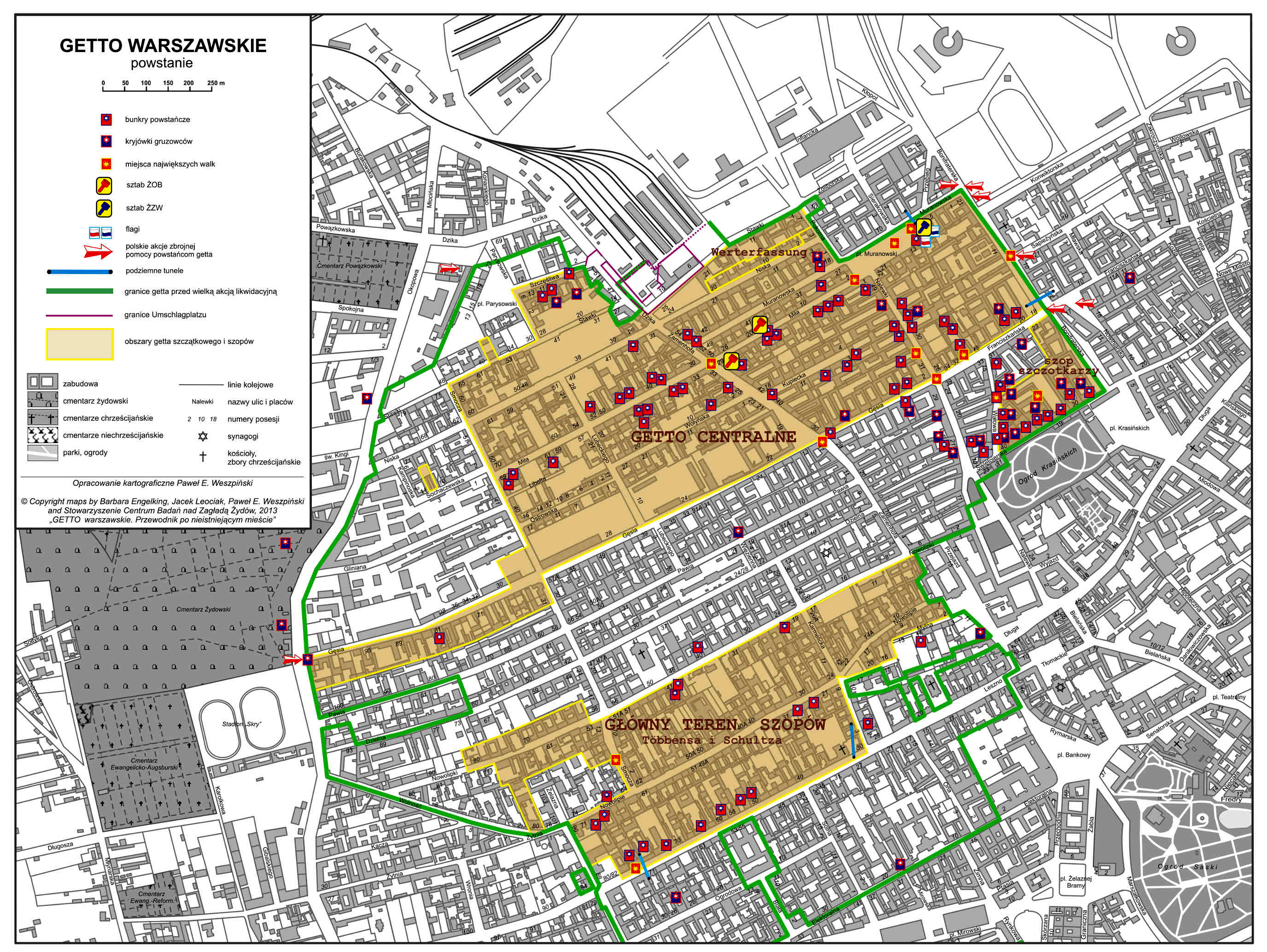
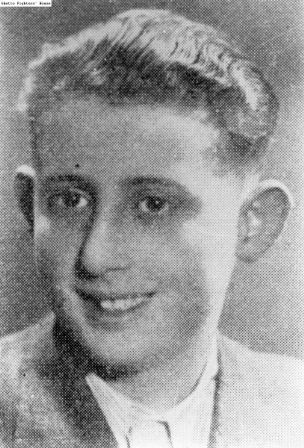
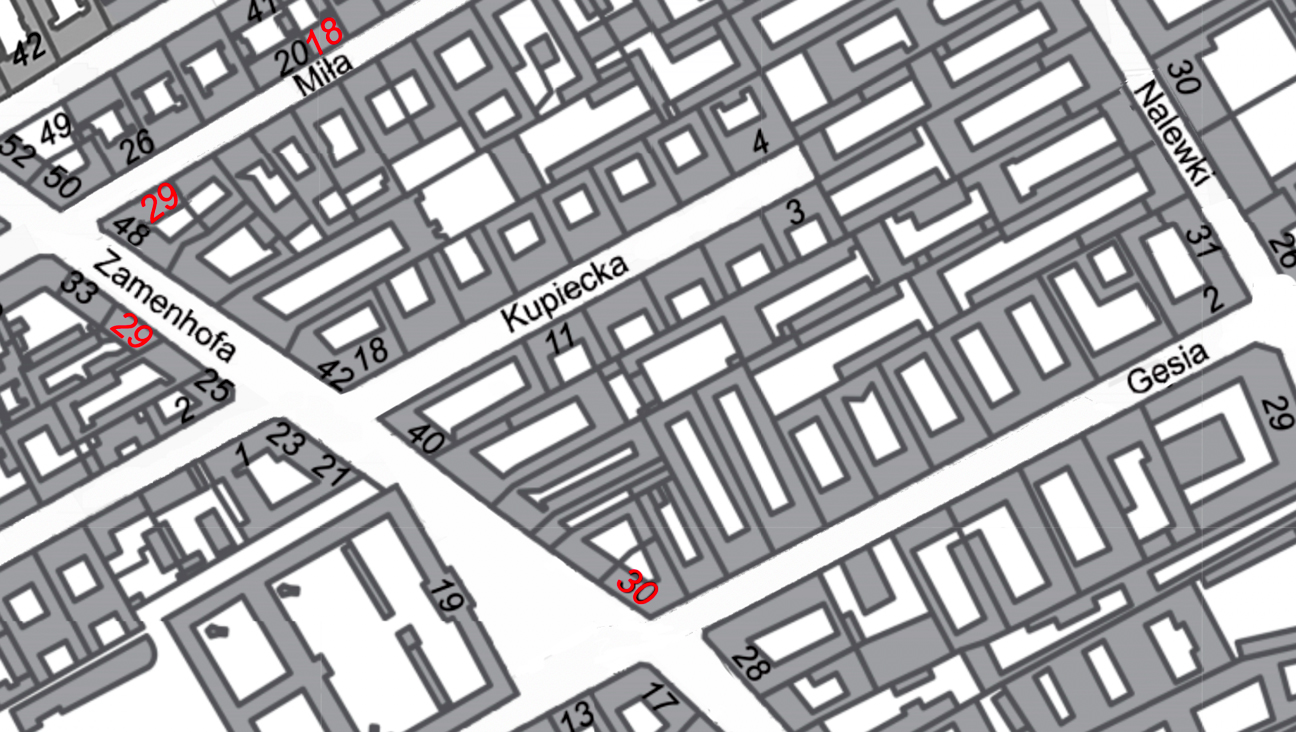
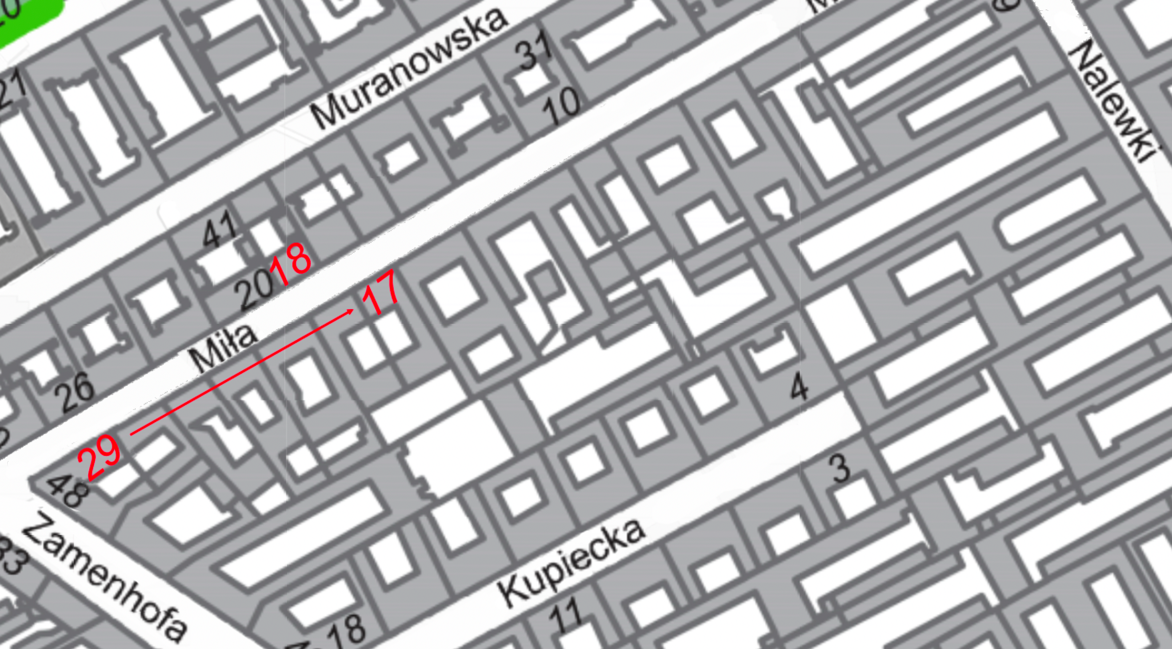
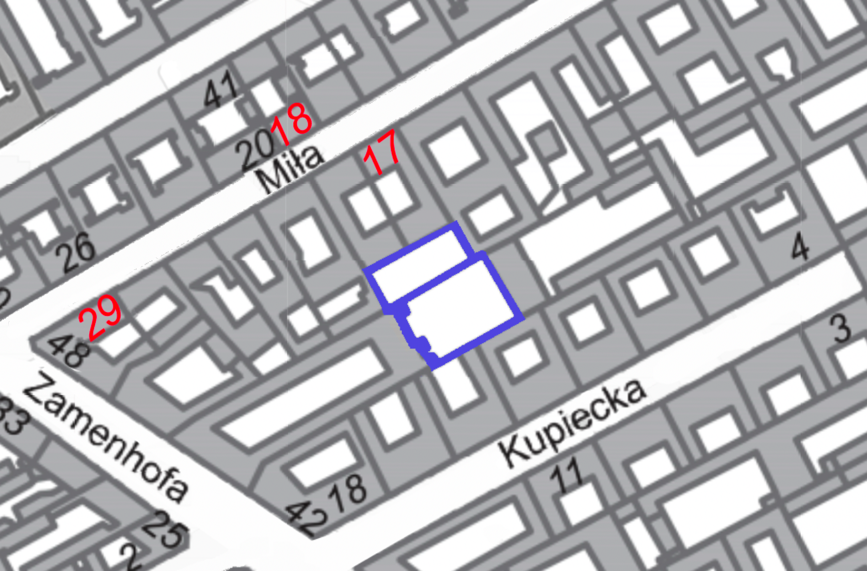
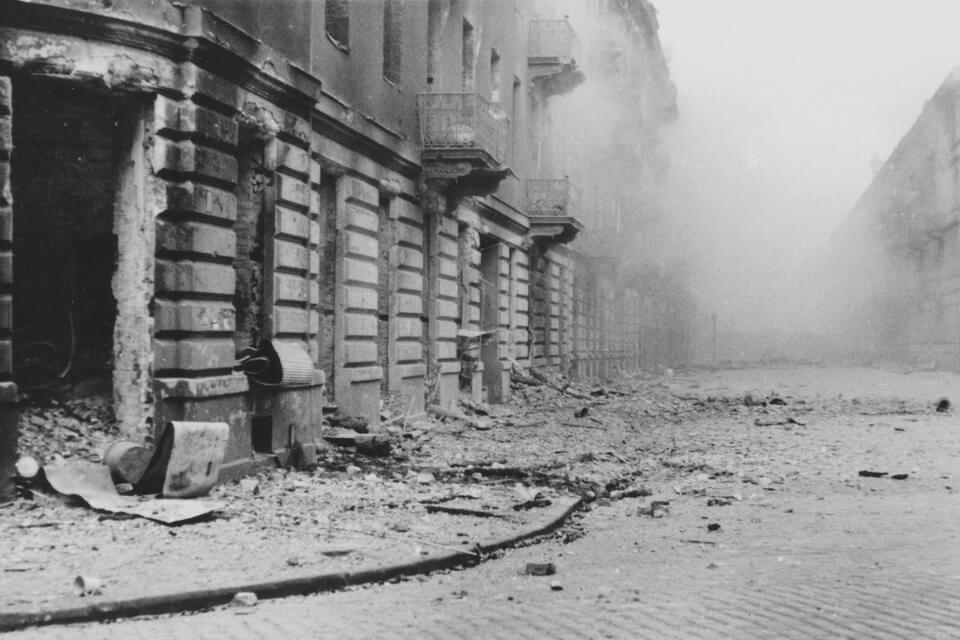
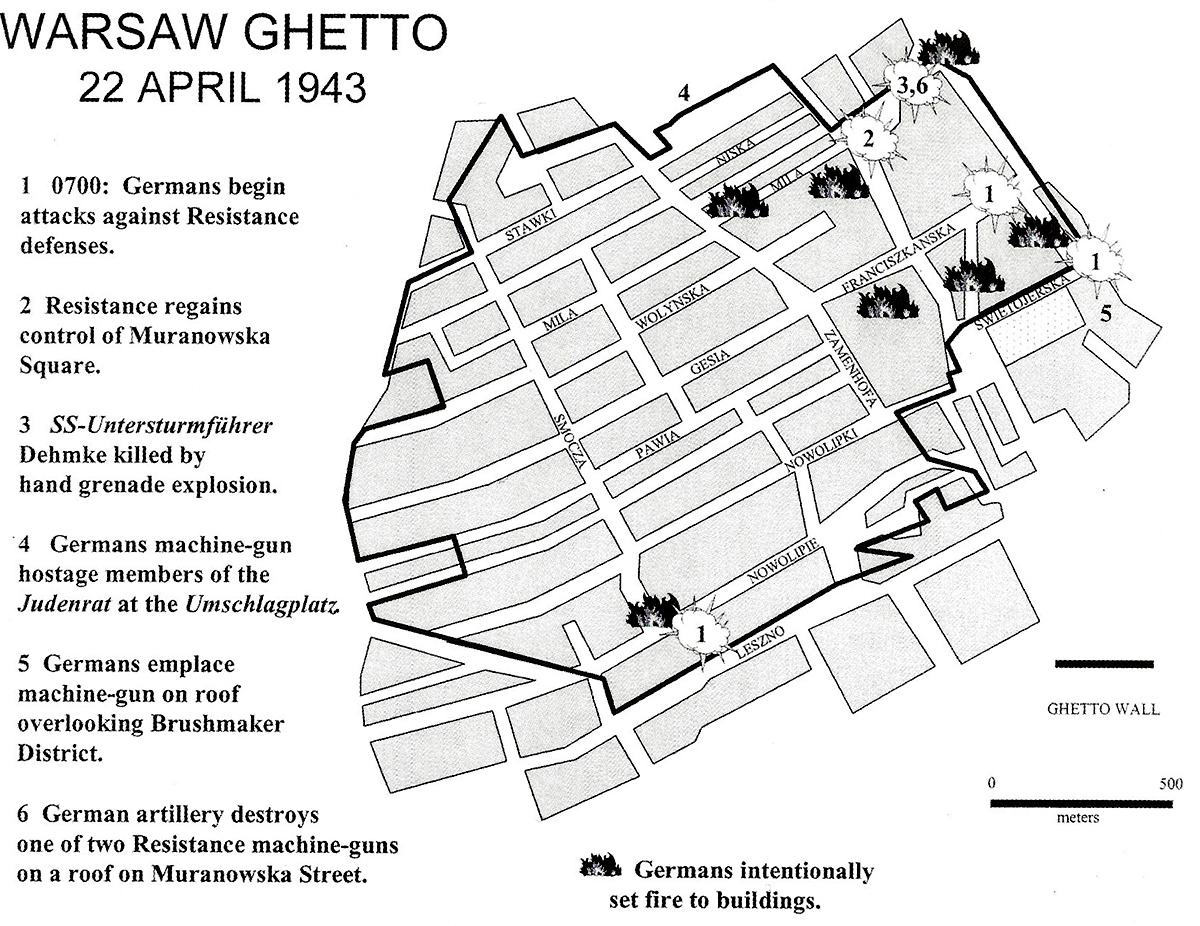
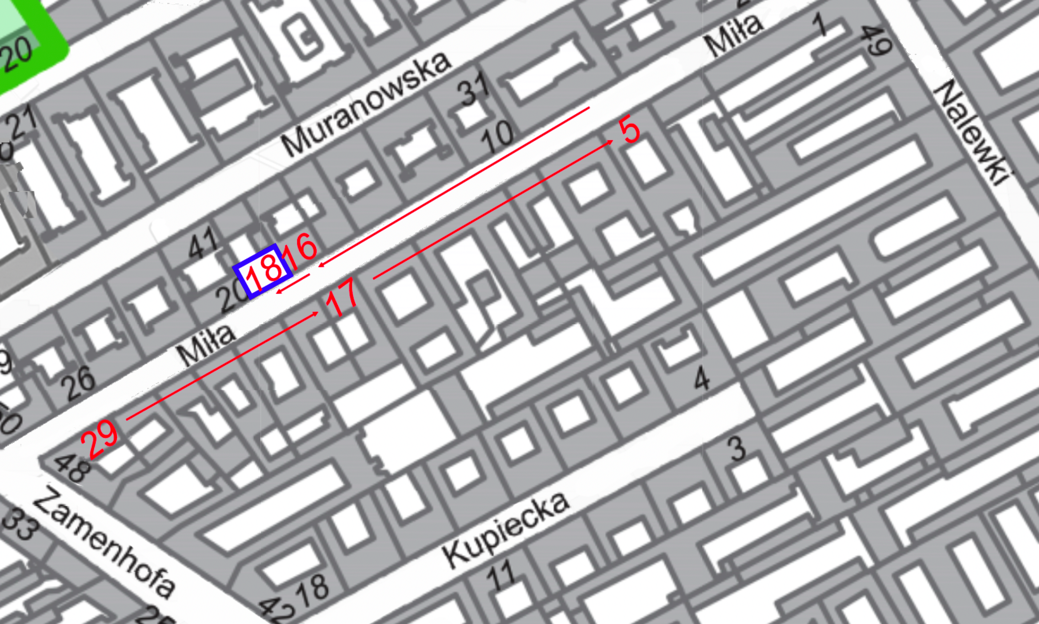
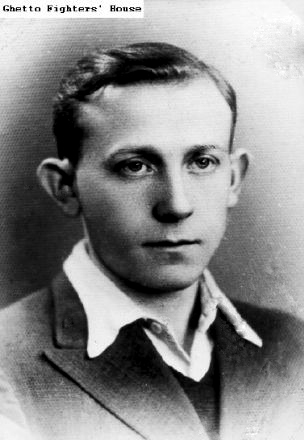
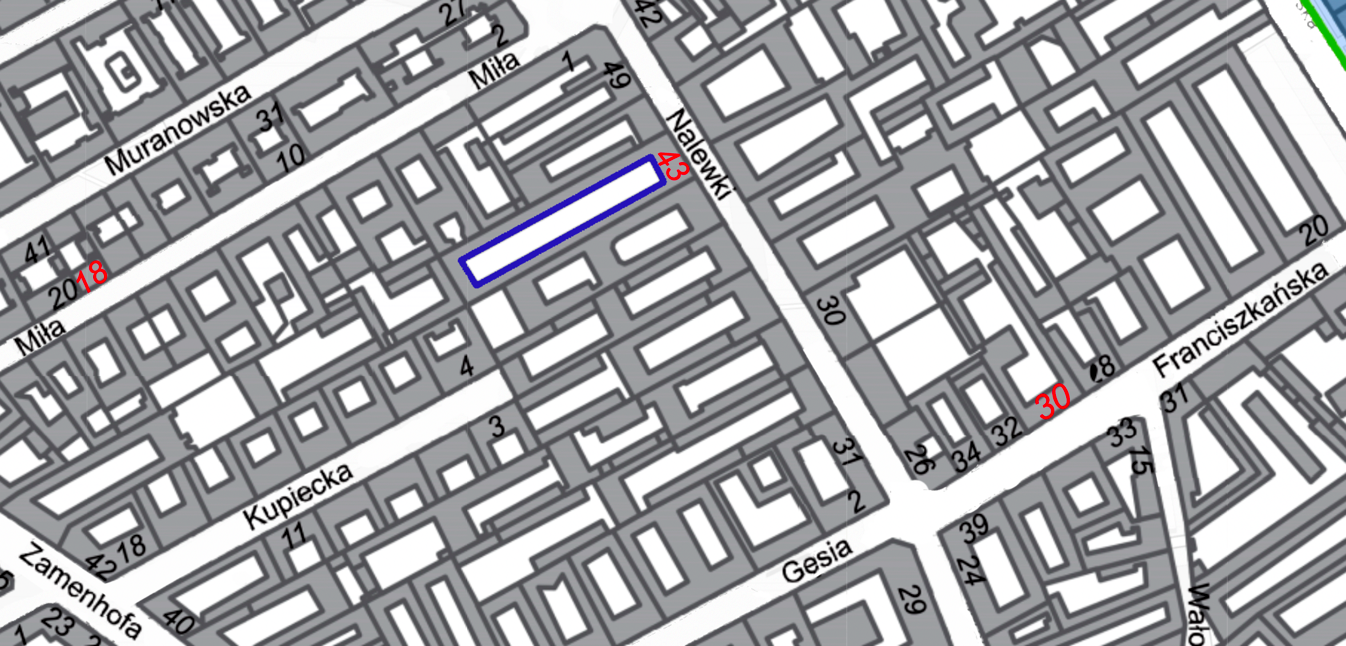
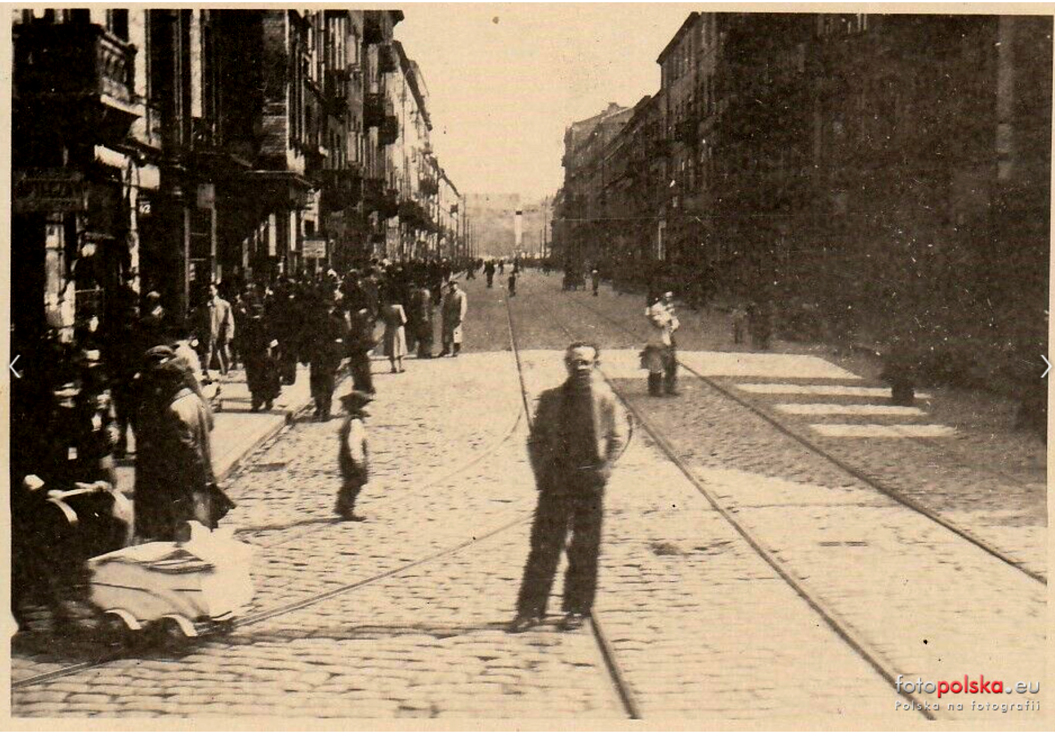
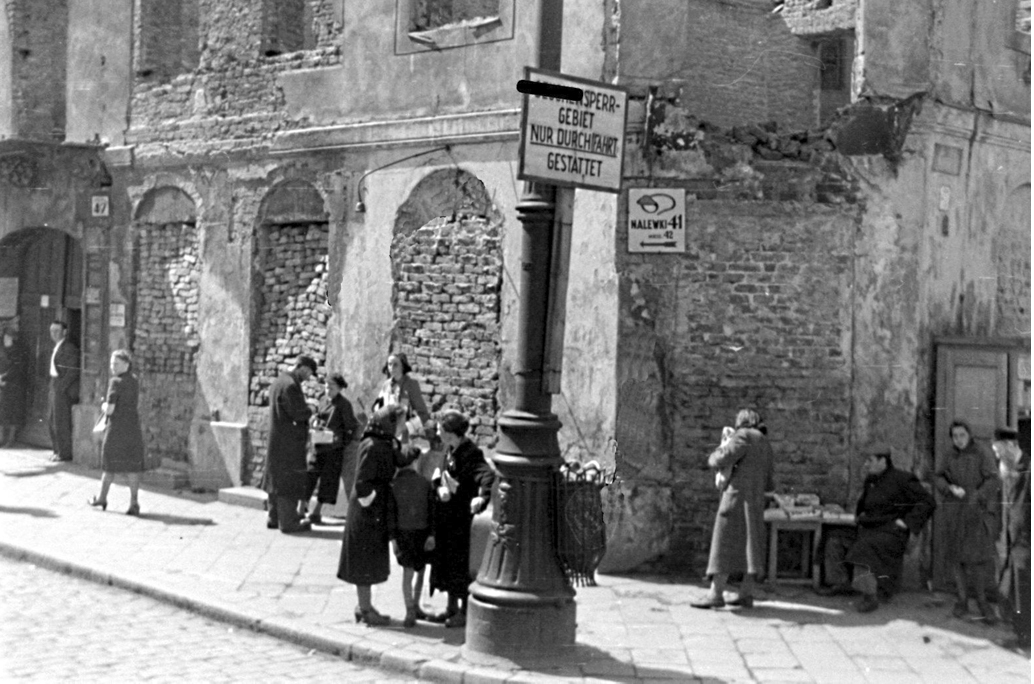
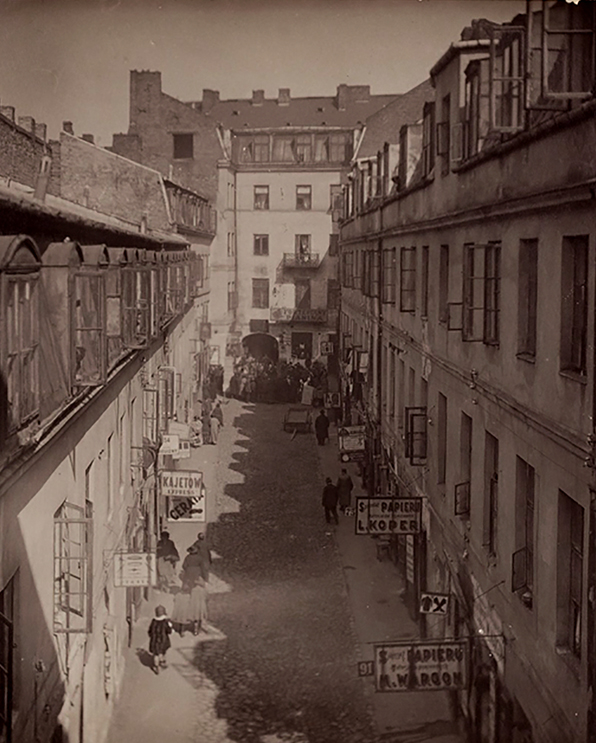
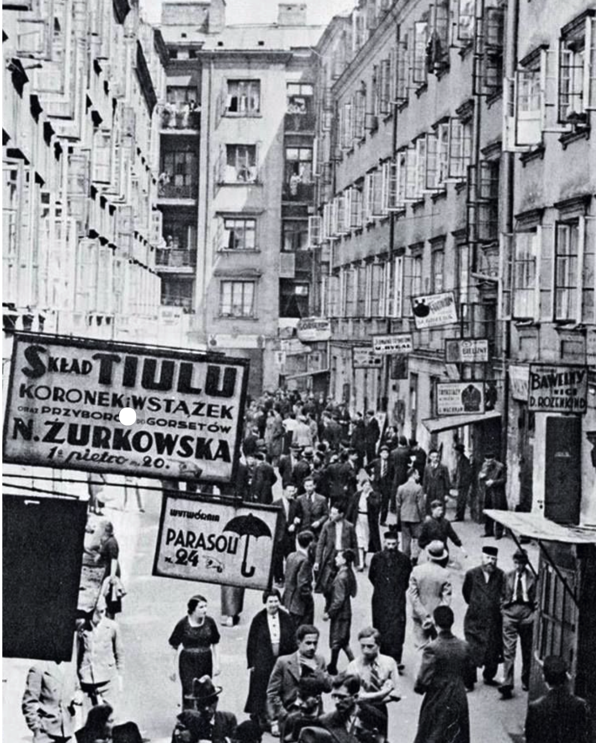

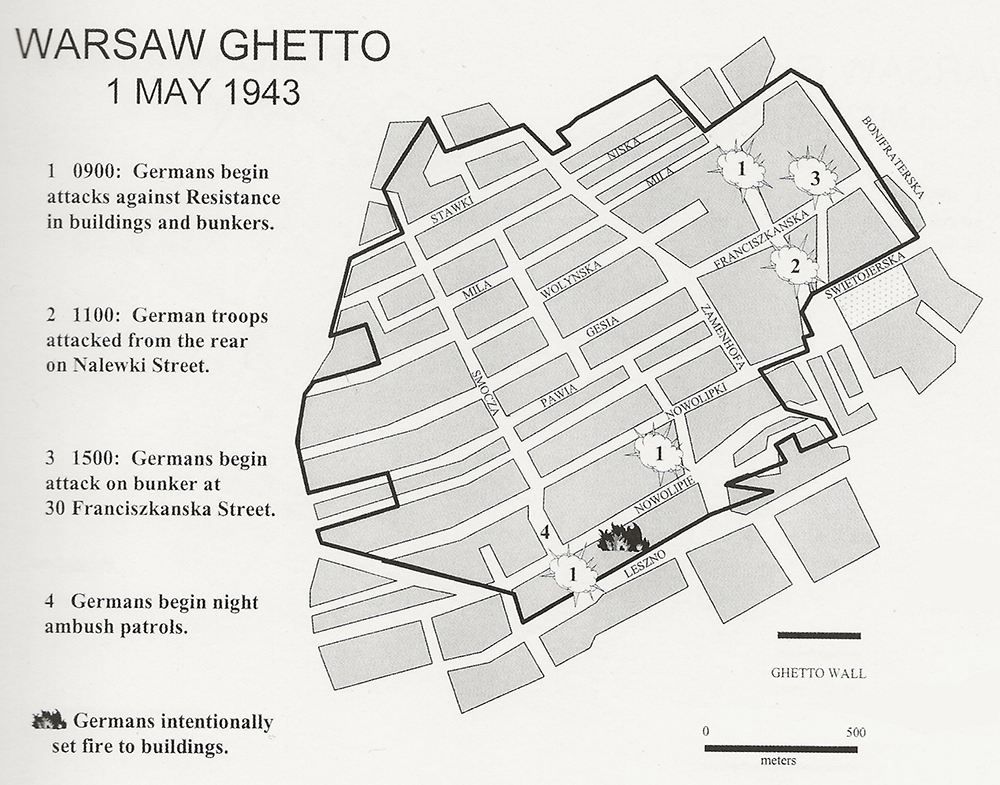
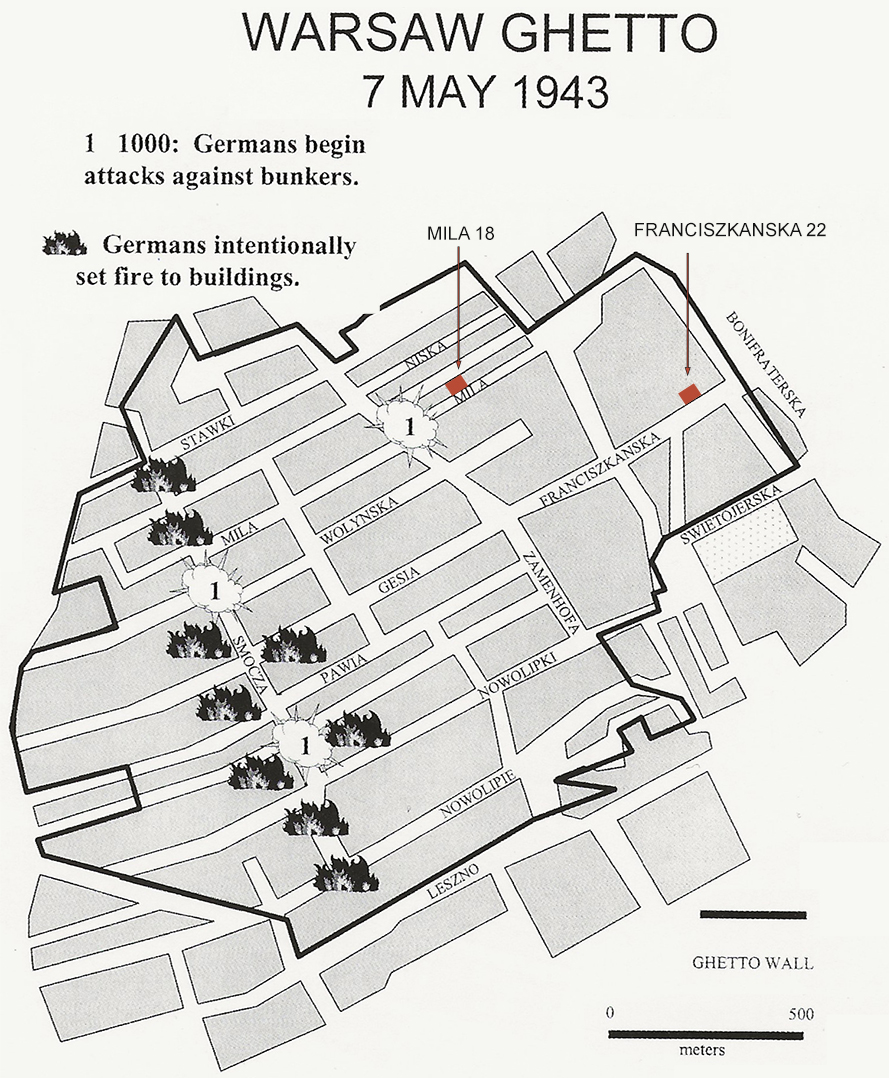
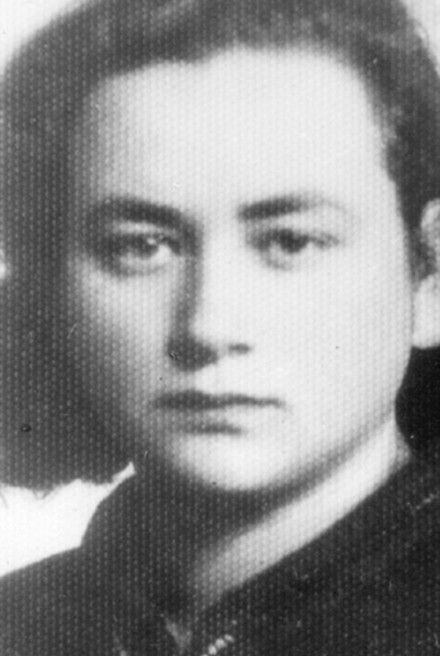
_1.jpg)
